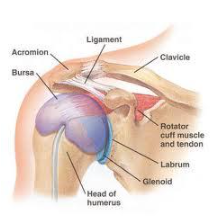“Pop!” That’s the dreaded sensation an athlete may feel in his/her knee while maneuvering around an opponent on the field. Following an awkward landing or a sudden change in direction, the popping sensation is often followed by severe pain with weight bearing, loss of range of motion and swelling of the knee. The injury may indicate an ACL tear, which can certainly sideline you from returning to your sport for months, sometimes even years. However, surgery is not always necessary depending on the severity of the injury you sustained.
Whether or not surgery is indicated depends upon several factors, including the patient’s activity level, the degree of the ACL tear, instability symptoms and physical demands of the patient. A patient with a torn ACL can recover without surgical intervention using conservative, progressive physical therapy with a comprehensive strengthening and stabilization program. The rehabilitation process typically lasts at least three months, although some knee instability may remain without surgical intervention.
A complete ACL rupture usually requires surgery to restore stability and allow the patient to return to higher-level sports without instability symptoms following non-surgical treatment due to the physical demands placed on the knee.
Why is it Important?
The ACL, or anterior cruciate ligament, is the primary ligament. It is made up of dense fibrous connective tissue that supports the front of the knee joint. It connects your upper leg bone to your lower leg bone, providing tensile strength between your knee joint. Without an intact ACL, your knee will feel unsteady or unstable and you will likely have difficulty pivoting and performing direction changes as a result of the joint’s instability. You will also note increased knee pain associated with an ACL tear preventing you from participating in your sport.
How Common Are ACL Tears?
According to a recent study published by the National Institutes of Health, there are approximately 200,000 ACL-related injuries sustained in the United States alone each year. Of those, half of the injuries required surgical intervention. Although 70 percent of ACL injuries occur while playing agility-type sports such as soccer, basketball and football, only 30 percent of those result from direct contact. Non-contact related injuries include over extension of the knee or rotation on a fully extended knee when weight bearing, which often occurs when landing from a jump with your knees locked or during quick direction changes and pivoting motions.
How Do I Know if I have a torn ACL?
A licensed physical therapist can evaluate your knee to determine if you have sustained an ACL tear or sprain. If you have continued pain with activity that does not resolve, buckling of your knee, deep throbbing knee pain, unsteadiness while walking or a loss of range of motion, do not push through it! Continuing activity with these symptoms can lead to further damage. Most ACL injuries are diagnosed through verbal history of how the injury occurred followed by a physical examination. A physical therapist will perform a series of special tests to determine the amount of forward translation of your lower leg bone and ligamentous laxity of the ACL to compare the resulting shifting of your leg bones away from each other. Imaging via MRI can also confirm your physical therapist’s findings but is not a substitute for a physical exam.
How Can I Optimize Healing so I can Return to My Sport?
Strength training for ACL injuries is specific to each individual based on the severity of their injury. However, a comprehensive rehabilitation approach is the most effective form of therapy. An ACL tear doesn’t have to be a career ending injury with proper treatment. Enhancing mobility through hands-on physical therapy and targeting specific muscle groups with sports-specific skills to improve hip, knee and ankle stability will increase your chances of returning to your sport with little to no discomfort. Since ACL reconstruction rehabilitation typically lasts 6-12 months, it may be a long road to recovery, but the reward is definitely worth a little extra work.
The best programs incorporate hands-on range of motion stretching, soft tissue and joint mobilization and instruction of strengthening exercises for hip, knee and ankle musculature to aid in stability. Rehabilitation should also include sports-specific agility and plyometrics training to improve jumping and landing techniques, balance and proprioception (your body’s awareness of where you are in space). Routine calf, quadriceps, hamstring, gluteal and lateral hip strengthening have been shown to decrease the risk for ACL injuries in athletes, particularly females. Regardless of whether your ACL injury requires surgical intervention, it is vital to complete a comprehensive physical therapy plan of care to address muscle imbalances, range of motion deficits and improve jumping, cutting and landing techniques to reduce stress on your knee joints and get you back into action on the playing field safely.
If you have any questions about ACL injuries or are having knee pain, contact Loudoun Sports Therapy Center today at 703-450-4300 to schedule an evaluation with one of our specialists. We’ll get you back on the field feeling stronger than ever!
To schedule an evaluation visit: https://loudounsportstherapy.com/request-an-evaluation/
Click Below to follow us on Social Media:
FACEBOOK INSTAGRAM TWITTER YOUTUBE



